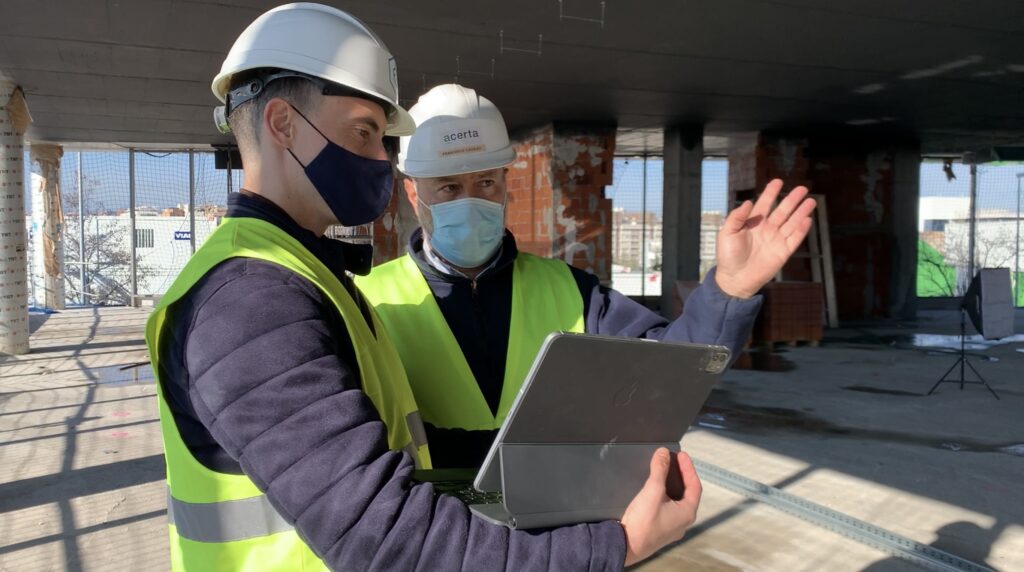The construction industry is undergoing a profound transformation thanks to Virtual Design and Construction (VDC). By leveraging 3D modeling, visualization technologies, and collaborative tools, VDC enhances project efficiency, reduces errors, and improves outcomes across the entire project lifecycle.
What is virtual design and construction?
Virtual Design and Construction (VDC) is a modern methodology that integrates Building Information Modeling (BIM) and other advanced technologies to streamline the construction process. VDC enables teams to simulate, coordinate, and visualize projects in a model-based digital environment before actual construction begins.
Unlike traditional approaches, VDC offers a collaborative framework where designers, contractors, and other project stakeholders can:
- Identify and mitigate risks.
- Optimize site logistics.
- Enhance overall project outcomes.
VDC also plays a key role in improving construction safety by addressing potential hazards during the design phase. For example, it can reveal accessibility issues or equipment interference before they occur on-site, ensuring smoother operations and fewer disruptions.
Differences between BIM and VDC
While BIM models are integral to VDC, the two concepts are not the same. Let’s break it down:
BIM (Building Information Modeling):
- Focuses on creating 3D digital models of buildings or structures.
- Provides detailed information, including architectural designs, structural components, and mechanical, electrical, and plumbing systems.
- Primarily emphasizes material data, geometry, and construction specifications.
VDC (Virtual Design and Construction):
- Incorporates BIM alongside other simulation tools for model-based planning.
- Focuses on enhancing construction coordination, site logistics, and resource management.
- Allows teams to visualize the entire project and collaboratively address potential challenges before construction begins.
In essence, VDC extends BIM’s capabilities by integrating it into a larger framework for improved planning, efficiency, and communication.

Use of VDC in the construction industry
The use of VDC in the construction sector has become increasingly popular in recent years due to the advantages it offers. Some of the ways in which VDC is used in construction are:
- Planning and coordination: It is used to create a virtual model of the building and allows the various teams to work in a collaborative digital environment. This allows all project teams to work together to coordinate and plan the project in detail, reducing errors and modifications during the actual construction.
- Simulation and visualisation: VDC can simulate and visualise different construction scenarios before construction begins. This allows you to anticipate problems during development before they occur on site, leading to an increase in project quality
- Cost and schedule control: It can analyse and manage project costs and deadlines in real time. This makes it easier to identify and resolve problems associated with these terms. This results in reduced investment and greater efficiency.
- Construction management: VDC is used for construction management in all phases of the project. This includes scheduling, resource management, team coordination and safety monitoring. VDC enables construction managers to have a complete view of the project in real time and make informed decisions to improve the efficiency and quality.
This industry has faced many challenges in terms of project coordination and management due to the complexity of projects and the number of stakeholders involved. The use of VDC has changed this situation completely as it enables the planning and coordination of different teams through a virtual model. In addition, it improves the efficiency, quality and safety of the project in all its phases, from planning to construction and management.
Why VDC is a game-changer for the construction industry
Historically, the construction industry has faced challenges related to coordination and complexity. Projects often involve multiple stakeholders, leading to miscommunication and inefficiencies. VDC has revolutionized this process by:
- Bridging communication gaps with collaborative tools.
- Improving project quality by addressing potential issues early in the project lifecycle.
- Streamlining operations across all phases, from planning to post-construction management.
Additionally, by incorporating technologies like virtual reality and predictive analytics, VDC further enhances project outcomes, ensuring alignment with stakeholder expectations and reducing risks.
As the construction industry continues to evolve, Virtual Design and Construction (VDC) is no longer an option but a necessity for staying competitive. By integrating BIM models, virtual reality tools, and model-based simulations, VDC offers unparalleled advantages in terms of:
- Efficiency.
- Safety.
- Cost-effectiveness.
- Overall project success.
To remain at the forefront of innovation, construction companies must embrace VDC and its transformative potential. By doing so, they can deliver better results, exceed stakeholder expectations, and thrive in today’s rapidly changing landscape.

